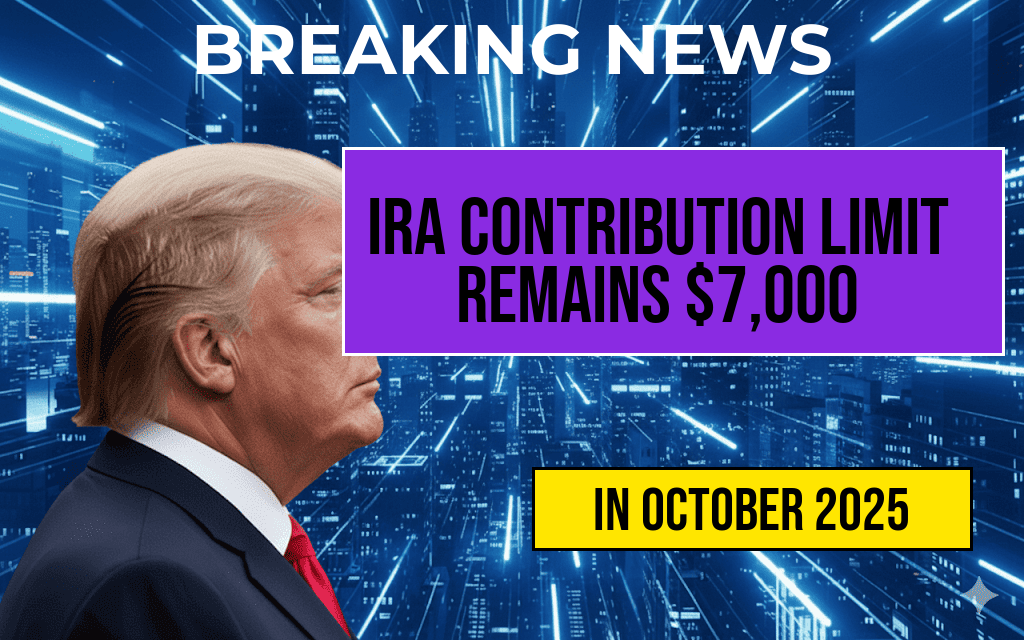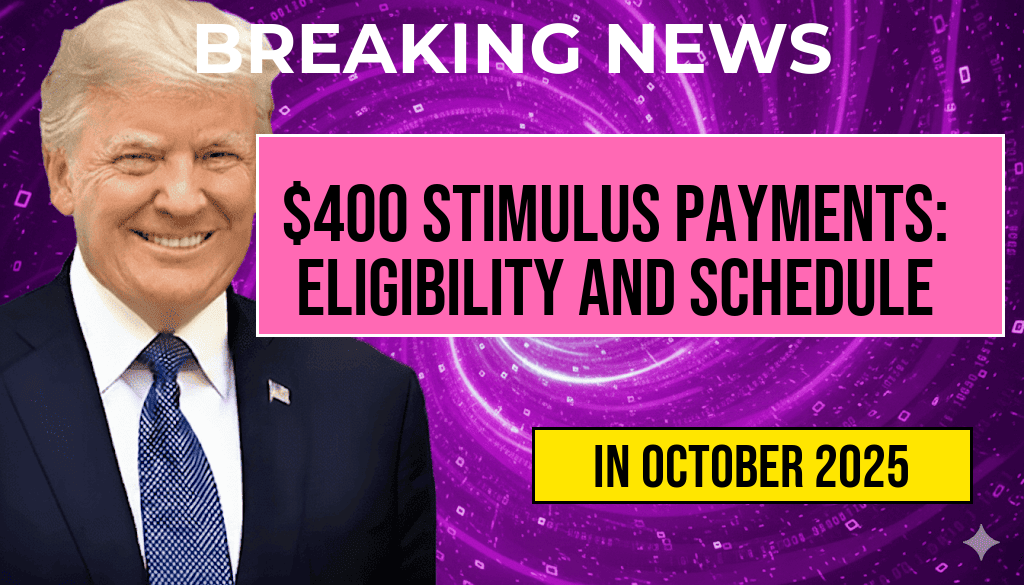The recent announcement of $400 stimulus payments has generated considerable interest as families across the nation navigate ongoing economic challenges. Designed to provide financial relief, these payments aim to support eligible households affected by inflation and rising living costs. This comprehensive guide outlines the eligibility requirements, the payment schedule, and essential details to help recipients understand how to benefit from these funds.
Eligibility Requirements for $400 Stimulus Payments
To qualify for the $400 stimulus payment, applicants must meet specific criteria established by federal and state guidelines. Understanding these requirements is crucial for ensuring that potential recipients do not miss out on their benefits.
Income Criteria
- Individual Income: Individuals earning less than $75,000 annually are typically eligible for the full payment.
- Household Income: For married couples filing jointly, the income threshold is set at $150,000.
- Dependent Status: Households with dependents may receive additional payments, enhancing overall financial support.
Residency Requirements
Eligibility for the stimulus payments also hinges on residency factors:
- Applicants must be U.S. citizens or permanent residents.
- Residents of states that have opted to distribute the payments will receive benefits, while those in states without such provisions will not.
Previous Stimulus Payments
Individuals who received prior stimulus payments, such as the $1,200 and $600 distributions during the pandemic, will likely find that their eligibility for the $400 payment follows similar guidelines.
Payment Schedule for the $400 Stimulus
The timing of these payments is crucial for families planning their finances. States will issue payments at different times, depending on their specific schedules and funding availability.
| State | Payment Date | Distribution Method |
|---|---|---|
| California | March 2024 | Direct Deposit |
| Texas | April 2024 | Check |
| New York | May 2024 | Direct Deposit and Check |
How to Apply for the Payment
Most eligible individuals will not need to apply separately for the $400 stimulus payments, as they will be automatically distributed based on tax filings from the previous year. However, those who did not file taxes may need to take additional steps to ensure they receive their payments.
Filing Taxes
To facilitate the distribution of these payments, eligible individuals should ensure their tax filings are up to date. This includes:
- Submitting tax returns for the previous year.
- Providing accurate personal information, including Social Security numbers.
Contacting Local Authorities
For those needing assistance or clarification regarding their eligibility or payment status, contacting local tax offices or state governments is advisable. Resources such as the IRS website can offer guidance on tax-related inquiries.
Frequently Asked Questions
Recognizing the widespread confusion surrounding the $400 stimulus payments, here are some common questions and answers:
Will all states provide the $400 payment?
No, only states that have chosen to implement this payment initiative will distribute the funds. It’s essential to check with state-specific resources.
How will I receive my payment?
Payments will typically be distributed via direct deposit or checks, depending on the information provided in your tax filings.
What should I do if I don’t receive my payment?
If you believe you are eligible but have not received your payment, it’s important to follow up with your state’s revenue department or visit the Forbes stimulus resource page for further assistance.
As the rollout of the $400 stimulus payments progresses, staying informed about eligibility and payment schedules can significantly enhance financial stability for many families during these challenging times.
Frequently Asked Questions
What are the eligibility requirements for the $400 stimulus payments?
To qualify for the $400 stimulus payments, individuals must meet specific criteria, including income thresholds and residency status. Generally, eligible recipients include those with a certain income level as defined by the government guidelines.
When will the $400 stimulus payments be distributed?
The payment schedule for the $400 stimulus payments varies by state, but the distributions are expected to begin in the upcoming months. It’s essential to check with local government resources for exact dates.
How do I apply for the $400 stimulus payment?
Most eligible individuals will automatically receive the $400 stimulus payment without needing to apply. However, those who do not file taxes may need to complete a form to ensure they receive their payment.
Will receiving the $400 stimulus payment affect my taxes?
No, the $400 stimulus payment is considered a grant and will not be counted as taxable income. This means you won’t have to pay taxes on the amount received.
What should I do if I haven’t received my $400 stimulus payment?
If you have not received your $400 stimulus payment by the expected date, it is advisable to contact your local tax authority or check the official government website for assistance in tracking your payment status.
With rising costs and ongoing economic challenges, many Americans are eagerly anticipating the arrival of $400 stimulus payments, designed to provide financial relief to qualifying individuals and families. As states and local governments roll out these payments, understanding the eligibility requirements and the detailed payment schedule is crucial for those looking to benefit from this assistance. This comprehensive guide outlines who qualifies for the payments, how much they can expect to receive, and when the funds will be disbursed, enabling recipients to plan their finances accordingly.
Who Is Eligible for the $400 Stimulus Payments?
The eligibility for the $400 stimulus payment varies by state and local jurisdiction, but generally, the following criteria apply:
- Income Level: Individuals or households must meet specific income thresholds. Typically, those earning below a certain percentage of the median income are prioritized.
- Residency: Applicants usually need to be residents of the state or locality providing the payment. Proof of residency may be required.
- Age: Some programs stipulate that recipients must be at least 18 years old, while others may include dependents.
- Citizenship Status: Most programs require recipients to be U.S. citizens or legal residents.
How to Apply for the Payments
To apply for the $400 stimulus payment, eligible individuals should follow these steps:
- Check local government websites for specific application details.
- Gather necessary documentation, including proof of income and residency.
- Complete the application form, which may be available online or in person.
- Submit the application before the specified deadline.
It’s advisable to keep an eye on communications from local officials, as updates on the application process can change frequently. For more detailed guidelines, residents can refer to state government websites or established news sources like Forbes.
Payment Schedule for the $400 Stimulus Payments
The payment schedule for the $400 stimulus payments is essential for recipients to manage their finances effectively. Below is a table that outlines the general timeline for disbursement, though specific dates may vary by state:
| State/Locality | Application Start Date | Application End Date | Estimated Payment Date |
|---|---|---|---|
| California | March 1, 2023 | April 30, 2023 | May 15, 2023 |
| New York | April 1, 2023 | May 31, 2023 | June 15, 2023 |
| Texas | May 1, 2023 | June 30, 2023 | July 15, 2023 |
How Payments Will Be Distributed
The distribution method for the stimulus payments will vary. Most payments will likely be issued via direct deposit for those with bank account information on file with tax authorities. Some states may also opt for physical checks or prepaid debit cards. Recipients should ensure their contact and bank details are updated to avoid delays.
Important Considerations for Recipients
While the $400 stimulus payments offer immediate financial relief, recipients should be mindful of the following:
- Tax Implications: It’s essential to keep in mind that stimulus payments may have potential tax implications. Consulting with a tax professional is advisable.
- Scams: As with any financial assistance program, recipients should be cautious of scams targeting individuals seeking to apply for the payments.
- Future Assistance: The $400 payment is part of a broader set of financial aid initiatives. Staying informed about additional programs can provide further support.
For ongoing updates regarding the $400 stimulus payments, including eligibility changes and payment schedules, individuals can consult reliable sources such as Wikipedia or the official state government websites.
Frequently Asked Questions
What are the eligibility requirements for the $400 stimulus payments?
To qualify for the $400 stimulus payments, individuals must meet specific income thresholds and residency requirements. Generally, eligibility is determined based on your tax filing status and adjusted gross income from the previous year.
How will I know if I am eligible for the $400 stimulus payment?
You can check your eligibility by reviewing the official guidelines provided by the IRS or your local government. They typically outline the income limits and other criteria necessary to receive the payment.
When will the $400 stimulus payments be distributed?
The complete payment schedule for the $400 stimulus payments is announced by the government, detailing the specific dates when payments will be issued. It’s essential to stay updated via official channels for the most accurate information.
How will I receive my $400 stimulus payment?
Eligible individuals can receive their $400 stimulus payment through various methods, including direct deposit, paper checks, or even prepaid debit cards, depending on the payment method you selected when filing your taxes.
What should I do if I don’t receive my $400 stimulus payment?
If you do not receive your $400 stimulus payment within the expected timeframe, you should contact the IRS or your local tax authority for assistance. They can provide guidance on how to address any issues related to your payment.











